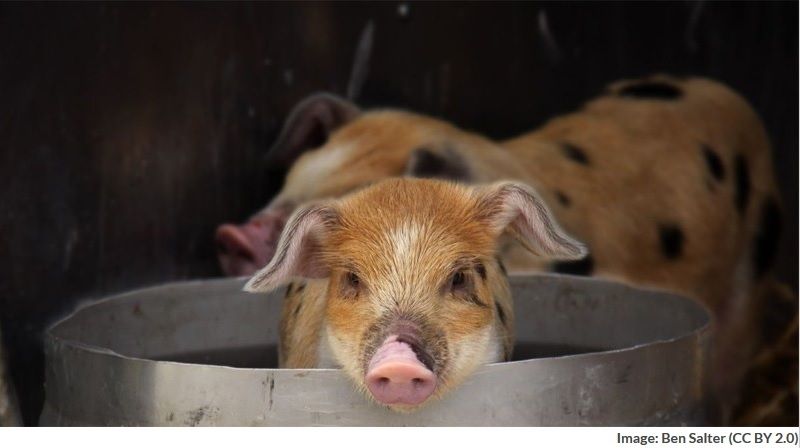Post by UKarchaeology on Sept 25, 2015 19:43:29 GMT

After 10 years of excavation and research, analysis of animal bones deposited in a midden at a prehistoric feasting site in Llanmaes, Vale of Glamorgan (south Wales), has revealed the novel custom of mass feasting focused specifically on pigs’ right forequarters.
The research – a collaboration between the University’s School of History, Archaeology and Religion and National Museum Wales – has provided extraordinary insights into the lives of Wales’ prehistoric ancestors.
Largest collection discovered in Wales
Published this week in archaeology journal Antiquity, the research details results from the analysis of more than 70,000 fragments of bone – the largest collection of prehistoric animal bones ever discovered in Wales.
This, the researchers say, is a remarkably rare survival in a country where the acid nature of soils normally means the loss of this evidence of past ways of life.
Equally significant is the discovery that the majority of the pig bones were from just one quarter of the animal – the right forequarter – suggesting a selective feasting pattern.
Biomolecular analysis of teeth and bones has also demonstrated that many of the pigs were not locally-raised and may have been brought to the site from a substantial distance away, a monumental feat in prehistoric Britain.
Using the latest scientific methods, university osteoarchaeologist Dr Madgwick helped reconstruct these ceremonial feasts, which drew people and their animals from the locality and beyond to engage in conspicuous consumption on a grand scale.
Pork was not a favoured meat
The research was undertaken by Dr Madgwick, a British Academy Post-Doctoral Fellow, and co-author Dr Jacqui Mulville, Reader in Bioarchaeology, in partnership with Amgueddfa Cymru – National Museum Wales, which led the research excavations.
Dr Madgwick said: “Surprisingly, nearly 80% of the animal remains at Llanmaes were from pigs, at a time when sheep and cattle were the main food animals and pork was not a favoured meat. What is perhaps more remarkable is that the majority of the pig bones were from just one quarter of the animal – the right forequarter. It might be that each household had to donate the same cut of meat to be included in the feast – that way everyone would have to slaughter a pig in honour of the feast.
Continued over centuries
“This selective pattern of feasting principally on just one quarter of one species is genuinely globally unparalleled and particularly startling as it continued over a period of centuries during the Iron Age.”
Dr Madgwick believes these tightly-controlled practices would have had a role to play in community cohesion.
He added: “The Early Iron Age communities of South Wales and beyond would have been small and dispersed, but these feasts would have represented a time of solidarity, when people came together to feast on pig right forequarters, just as their fathers and their fathers’ fathers had done.”
Adam Gwilt, Principal Curator for Prehistory at Amgueddfa Cymru – National Museum Wales, and one of the museum co-directors of the project added: “Middens speak not just of the everyday and filled bellies, but also about the ways of thinking and being, the customs, values and beliefs of the time. Communal feasting connected distant parts of Atlantic Europe during the later Bronze Age, offering opportunities for expressing and negotiating power relations, maintaining and binding contacts, alliances and exchanges.”
The research is ongoing and Dr Madgwick is currently undertaking further scientific analysis to reveal seasonal patterns of feasting and the methods of cooking and food preparation used.
(pic & source: www.pasthorizonspr.com/index.php/archives/06/2015/prehistoric-pig-bones-show-selective-feasting-patterns )
